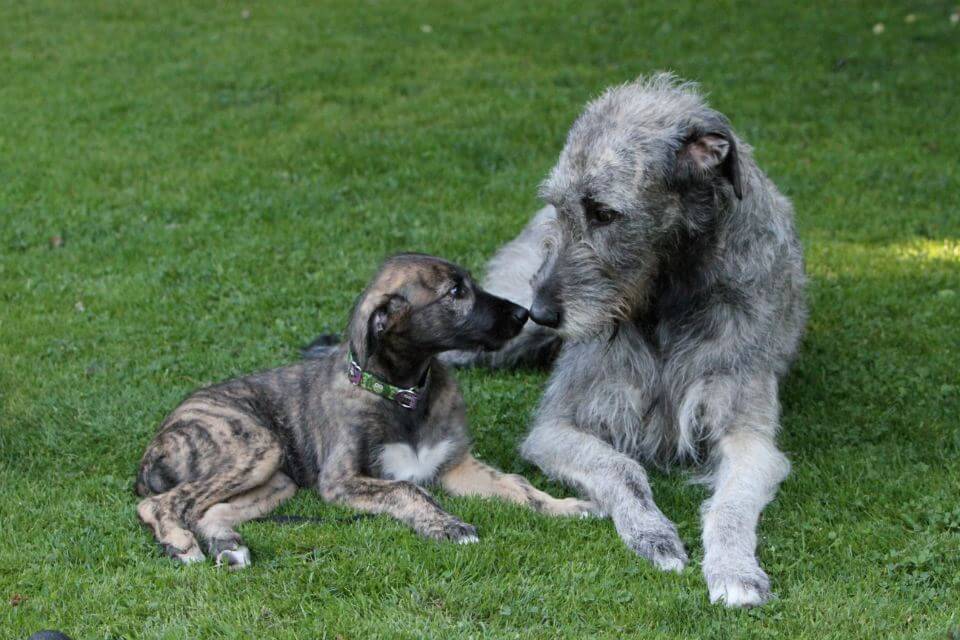
Home » The Irish Wolfhound: A Breed That Has Stood the Test of Time
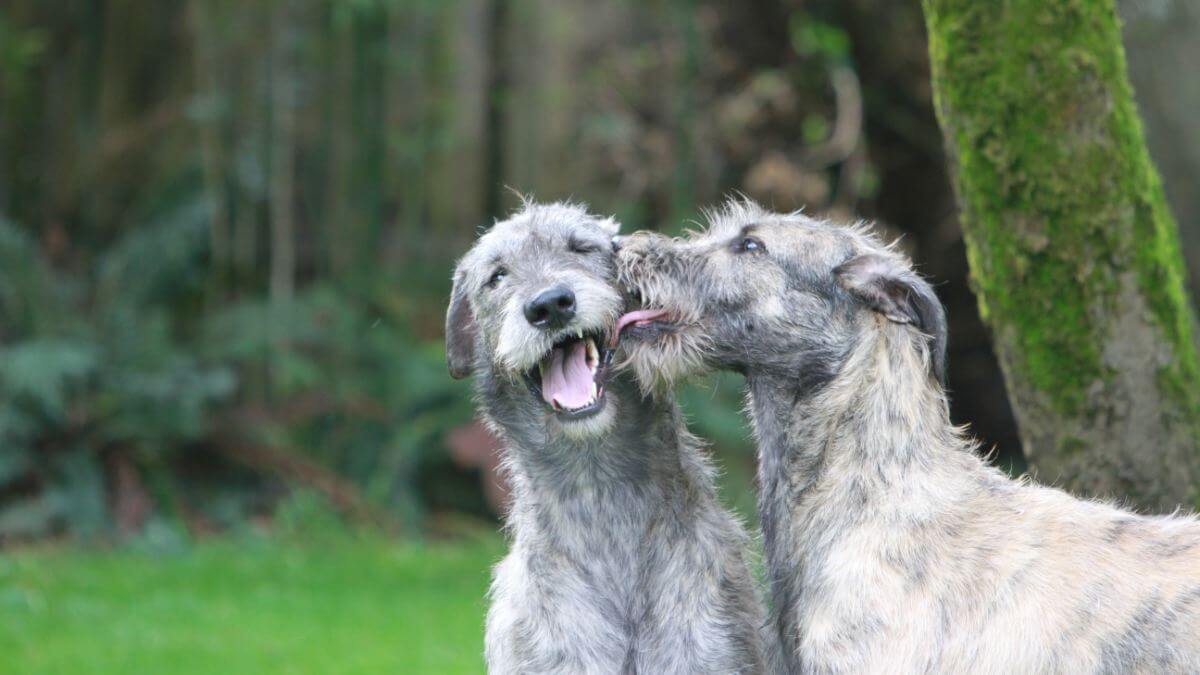
Generally speaking, Irish Wolfhounds are not an acquired taste. One does not blindly pick the breed, does not think he or she will just get a wolfhound and see if it grows on them.
Most of us came upon an article in a newspaper, magazine or in a book, film or video, and knew, knew instantly, that this was something we had been searching for, something we had been missing and needed in our lives. Breeders and owners of Irish Wolfhounds down through the years have commented that these gentle giants just fit them, fit in their lives, suited their personalities, fit in their homes and families. They can be athletic when needed and they can be quiet and consoling, intelligent, sly and cunning, slow, comical and silly, pouting and begrudging but almost always intuitive to their master’s feelings.
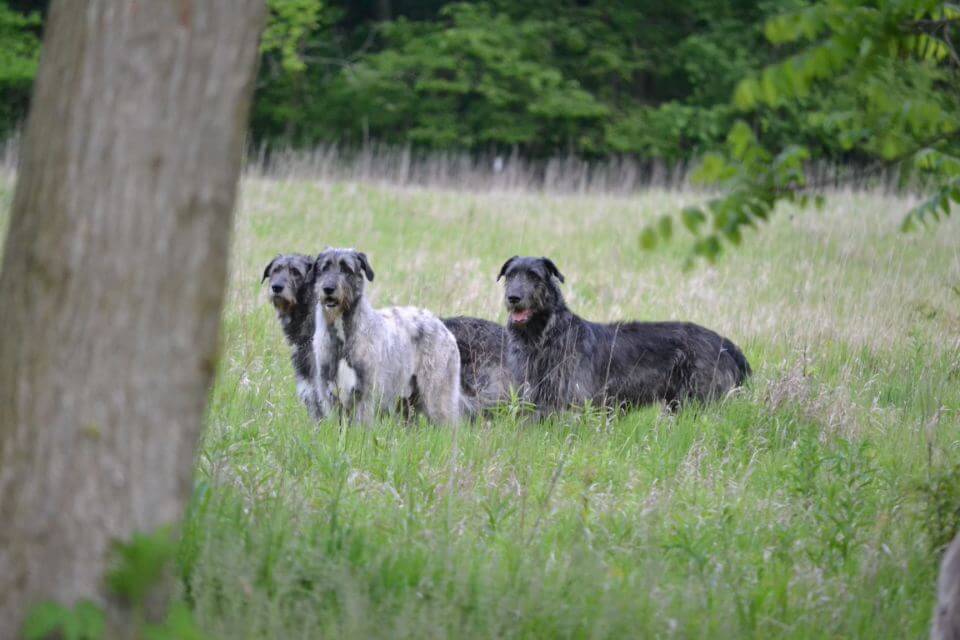
Through fact, fiction, and lore, the history of the great Irish dog has sifted down through time like gold dust from an assayer’s hand. It is present every day to those of us who love them, hiding there just behind their eyes. Ever evolving from the fierce hunting and fighting dogs described by Strabo in 24 A.D. as gigantic greyhounds, they having been in use among the Celtic and Pictish nations to Hollinshed (16th century) who says of the Irish, “They are not without wolves, and greyhounds to hunt them, bigger of bone and limb than a colt.” This includes the wolfhound Gelert, who forfeited his life by his master’s hand after having saved his master’s child from a wolf. And on to Bran, the favorite wolf-dog of Irish Chieftain Fionn Mac Cumhaill. These dogs appear out of an ancient mist, from great hunters to near extinction to rebirth and resurrection through the hands of great passionate and dedicated breeders such as Captain George Graham, Hamilton Rowan, Captain Hugh D. Richardson, Mr. Whyte Baker, Jr. of Ballytobin, and Sir John Power of Kilfane. These steadfast keepers of this breed fed hounds through the great famine, which took Ireland from a population of about eight million to one of approximately two and a half million. The wolf was gone, the wolfhound’s work was done, times were hard, and only a few struggled through.
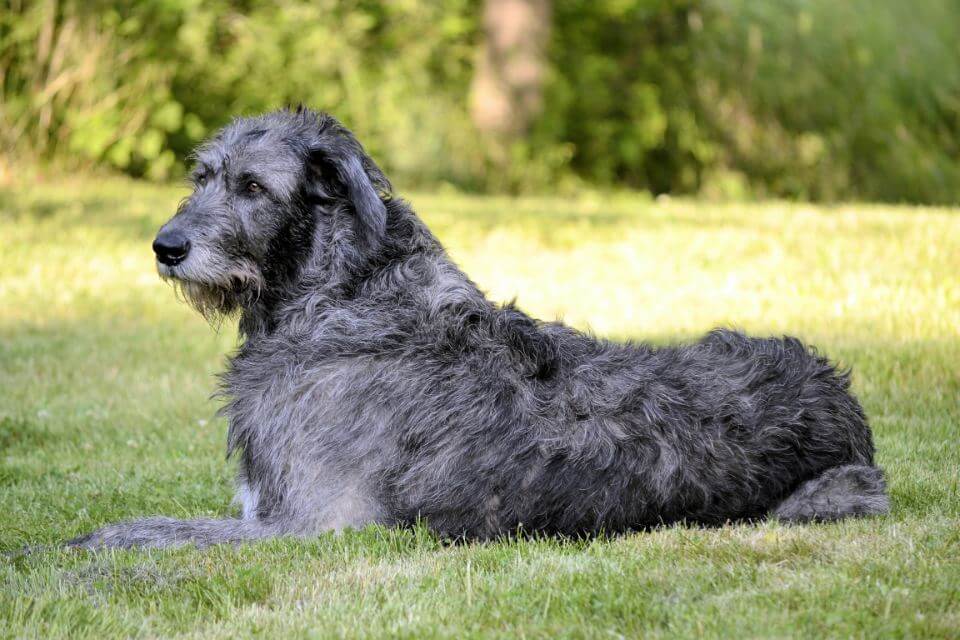
In 1885, Captain Graham founded the Irish Wolfhound Club of England and continued his work in the breed until his death in 1909. His final article on Irish Wolfhounds is as meaningful today as it was then when he wrote, “…a firm stand must be made against awarding prizes to hounds that are not absolutely sound, as the breed is essentially a galloping one and meant for rough as well as fast work, and therefore, coat, soundness of limb, and freedom of action, must be insisted on. Girth is also most essential as without it, the necessary lung and heart action is impossible… It therefore behooves all judges of this breed to see that the unsound hound never receives a place in any class, it being much better to make no award than to give a prize to a hound that may be largely used for perpetuating cripples.”
Captain Graham said of Ch. Cotswold, (born in 1902, owned by Mrs. Percy Shewell), “…a wheaten colour with long head and body, great bone and girth, and absolutely straight on his legs…”
The breeders that followed, the ones that “set” the lines and the major players for years to come such as Mr. Everett of Felixstowe Kennels, Miss Nichols of Bradfield Kennels, the Reverend C. H. Hildebrand of Clonard Kennel, Captain and Mrs. Hudson of Brabyns, Mr. J. V. Rank of Ouborough, and Mrs. Florence Nagel of Sulhamstead Kennels, protected and sheltered them to keep lines going, through food shortages, depression, war conditions in England and Ireland, and great outbreaks of distemper.
We have all undergone major changes in the way we live over the past 60 years, and so too the Irish Wolfhound has changed to suit our needs. No longer do we need to keep wolves from our flocks, most of the great kennels are gone, and we are in need of a trusted companion. They fill the bill.
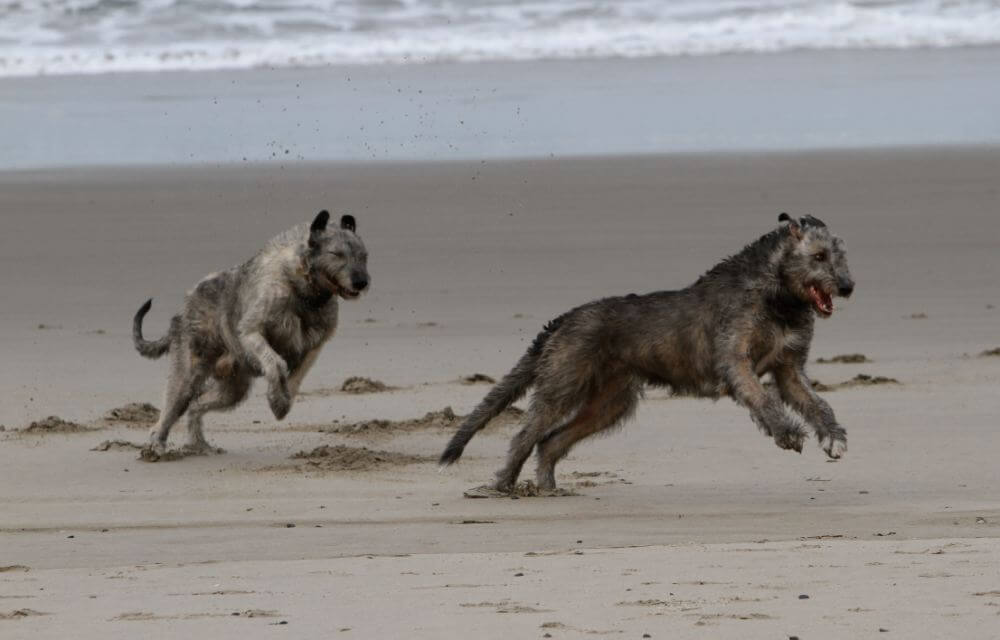
Along with the breeder’s need to evaluate breeding stock and the advent of Conformation “dog shows,” those who sought to find other pursuits with their dogs have found their niche through Obedience, Coursing, Agility, and Therapy. The list continues to grow, and for the most part our hounds try to humor us. Irish Wolfhounds are nothing if not adaptable, with maybe the exception of turning around in small places. They live in cold and hot climates but prefer cool. They live in small houses and on big ranches. They comfort the old and have great patience with the young. If raised with small animals they can be very gentle. They can dispatch a rabbit, squirrel, or other game with amazing speed and power. They die too soon and break our hearts, and we cannot imagine being without them.
To those who take up the baton of the Irish Wolfhound and whose actions today will be the history of tomorrow, know that you cannot properly understand the breed, and certainly cannot properly interpret the Breed Standard, without at least a rudimentary knowledge of their history. The Standard is your bible. You breed to it and not to what you see in the show ring. To look to the future, we must have an appreciation of the past and honor the dedication and sacrifice of those who worked so diligently to preserve this great breed. To those of us who drop our hands to our side to have them fall gently upon the great shaggy head of an Irish Wolfhound, well, we know how lucky we are.
